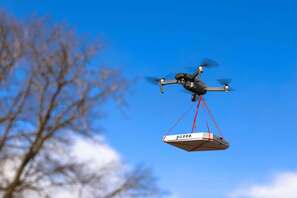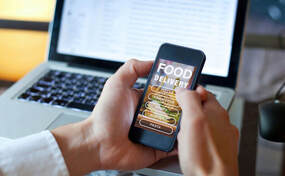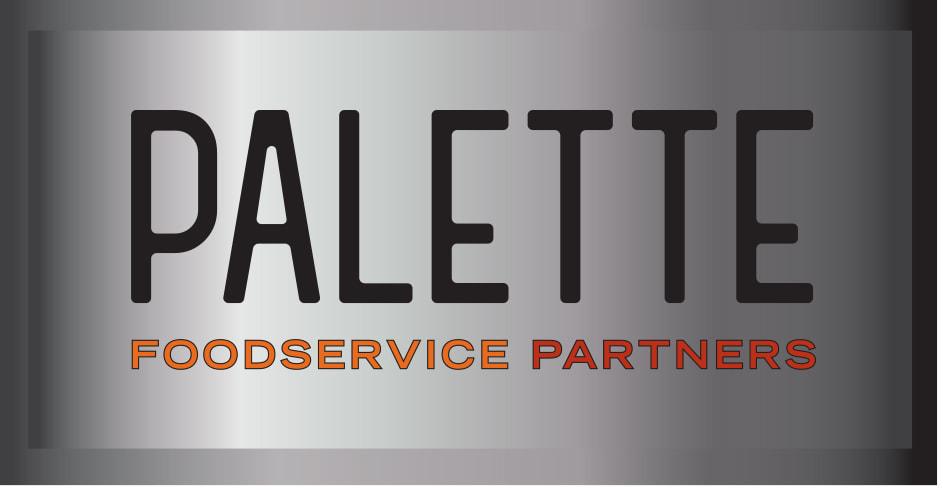 Consumers want restaurant delivery – and not only on cold winter nights. According to research from Statista, the online food delivery market in the U.S. is projected to grow more than 13 percent annually in the next few years, reaching a projected market volume of $534 billion by 2028. It’s a good time to make sure your restaurant’s delivery mechanism works as smoothly as it can and offers guests the convenience they demand as you adopt new technology or consider taking on new delivery partners. Looking at your current delivery capabilities, are you able to rely on your system to deliver a consistent and positive experience to guests? Can your system easily scale up as your business changes and grows? Does it meet your budget constraints? Can it help you respond to order inquiries promptly and accurately? Do its features reflect the features available through your third-party delivery partners or do you need to compromise in certain areas? Do you feel that your system empowers you to act on in-the-moment decisions as business conditions warrant? For example, if you want to update a menu item, offer a limited-time promotion, or turn your delivery availability on or off, can you make a change in an easy, agile move? As you set out to preserve or build your delivery business this year, consider what goals you want it to help you achieve. Make sure you and your team understand and can use its full functionality. Where possible, adapt existing processes so you operate with leaner technology. Finally, review your progress on a regular basis so you can course-correct as needed.  If you’ve been struggling to find a way to make delivery efficient and cost-effective, drone delivery is gradually and steadily gaining ground as an additional means of getting food to customers fast. Futuristic as it may still seem, a number of restaurant brands have been testing and launching the technology in limited areas. Nation’s Restaurant News reported that a Chick-fil-A in Austin, Texas is the latest among other Chick-fil-A stores to test the technology, and other brands include Jersey Mike’s, Freddy’s and Sweetgreen. At the Austin Chick-fil-A, the operators said the test of drone delivery was done to cut delivery costs and provide consistency. While the radius of the drone delivery is still small at under two miles, the response has been positive, with one customer saying their food arrived “super fast” and was “hot, perfect.”  Third-party delivery platforms can be kind of a mystery for restaurant operators. They can be critical in helping restaurants accommodate guest preferences for delivered food, but much is unknown about them. For instance, how will your restaurant appear on their site? What factors determine better placement and exposure for some businesses over others? As a recent report from Restaurant Business indicates, several factors play a role. The tiered pricing structures of some of these services can determine a restaurant’s exposure on a platform, though selecting the lowest tier of pricing can offer more exposure on some platforms than on others, so it pays to shop around. Beyond that, your restaurant’s speed of preparation, historical order size, order accuracy, regular promotion offers and customer reviews all help inform the algorithm too. Boosting your performance in each of these areas can appease the algorithm — it’s hard to know if one factor is valued more or less than the next.  As curbside pickup gained momentum during the early months of the pandemic, many restaurants adopted geofencing technology to track customers driving to the restaurant to collect their food. While the tracking information helps restaurants coordinate the prompt delivery of orders to the curb and also helps them target customers in the vicinity of the restaurant with coupons and promotions, geofencing provides additional customer-side benefits too. More delivery drivers are now being equipped with their own devices that enable customers to not only track the status of their order but to trace its path. It’s another way some restaurants are trying to enhance transparency and service at a time when consumers need more incentive to spend.  Consumer customization isn’t going away. In fact, looking beyond your menu to give your customers even more options to customize their experience may help you gain a competitive advantage. Tech is enabling those changes. According to Dana Macke, the director of trends for the Americas at Mintel, current efforts to expedite delivery are going to evolve into efforts to offer greater flexibility. That means that going forward, restaurants will be able to give customers greater control over when their delivery order arrives, for example. We can also expect greater use of predictive technologies to help restaurants ensure their guests’ orders are tailored to their schedule and needs. Can you enhance the customization of your customers’ ordering experience?  As restaurants adjust their service models and real estate footprints to better accommodate off-premise orders for the long haul, they are also gaining new options to maintain the quality of their food in transit. A recent trend report from Nation’s Restaurant News mentions the Swedish company Dometic, which has launched a temperature-controlled delivery box designed to keep hot foods hot and cold foods cold. Innovations like this could give restaurant operators more freedom to offer popular menu items that lose quality quickly when wrapped in traditional takeout packaging (and may have been removed from off-premise menus as a result).  The end of the year is a time restaurant operators can count on for strong performance – with December typically the most profitable month of the year. But Black Box data from December points to sales growth of just 4.1 percent, compared to 8.4 percent in November. It marked the weakest month for the industry since the 2.7 percent growth reported in March 2021. In light of those results, a recent Restaurant Business report suggested guests may be questioning restaurants’ value amid steeply climbing costs. It’s no wonder – amid ingredient and labor shortages, along with escalating costs, something has to give. But all the same, operators can only turn those figures around if they can demonstrate the value of choosing a restaurant meal over one prepared at home. Staffing shortages can cause service to take a hit, but you may be able to help compensate for this with improved speed of preparation: Simplify your menu with speed-scratch ingredients or other elements ready to be added to a number of dishes. Remove friction from the process guests must go through when searching for you online and placing an order. That means monitoring your restaurant online to ensure information about your menu, hours and contact information is up to date on review sites, search engines and social media, as well as testing your online ordering functionality to remove glitches and ensure repeat guests are recognized in your system. Speaking of loyal guests, double down on your loyalty program and guest personalization, which will make it feel more worthwhile for guests to support your business (either in your dining room or through order collection), as opposed to having a third-party vendor drop off their delivery order. Finally, aim to appeal to guests’ own values by supporting local suppliers and sharing their business names with guests – an expensive meal feels more worthwhile to a guest when they know it supports their broader community.  At a time when every extra bit of profit is critical, it’s important for your customers to be ordering food from your restaurant app and, ideally, collecting their order from you – as opposed to calling a third-party delivery provider to bring it to them. If you’re trying to convert guests from third-party channels right now, focus on offering a good introductory deal that will entice people to order via your restaurant directly, then making it as easy as possible for them to stay with you as opposed to reverting back to the third-party app. That could mean placing a flyer in every third-party order bag that leaves your restaurant and including a coupon for a substantial discount off of a future restaurant-app order, as well as a QR code that the recipient can scan to get your app. From that point, you will have an entry point you can use to send subsequent offers they can redeem when they use your app and/or collect an order curbside. And while those offers may not be as substantial as the initial one, they can still provide a discount from what the customer would have to pay a third-party provider. You can also continue to use the data you collect from your app to make your offers increasingly customized. When you test the experience of ordering through your app and compare it to the ease of ordering via a third-party provider, where are the snags? Ironing them out should mean the difference between retaining the customer ordering via your app and having them return to the third-party app on subsequent orders.  At a time when restaurants may find it difficult to justify the fees that come along with third-party delivery, or risk having food tampered with or delayed in arriving, bringing delivery in-house may sound like a tempting option. The evolution of restaurant technology is helping to make that possible for more restaurants. Brands including Portillo’s and P.F. Chang’s adopted the restaurant delivery management platform CartWheel, for example, to help make the transition to offering in-house delivery for certain orders. The shift to the technology has also helped the brands create (or expand) new tip-generating roles for team members.  The evolution of restaurant technology in the past 18 months hasn’t been just about the streamlining of the ordering and payment of food, but also about the development of food to meet the moment. (And the moment, for so many restaurants, seems to be about perfecting the off-premise dining experience.) Simplot, for one, has launched a new kind of French fry that doesn’t get soggy and limp during delivery and is microwave-reheatable. Now is prime time to assess your menu to ensure everything travels and reheats well – and to keep an eye on up-and-coming additions in food products and packaging. They could change the game for your takeout and delivery menu by having it more closely reflect the in-dining room eating experience. |
Subscribe to our newsletterArchives
April 2024
Categories
All
|



 RSS Feed
RSS Feed